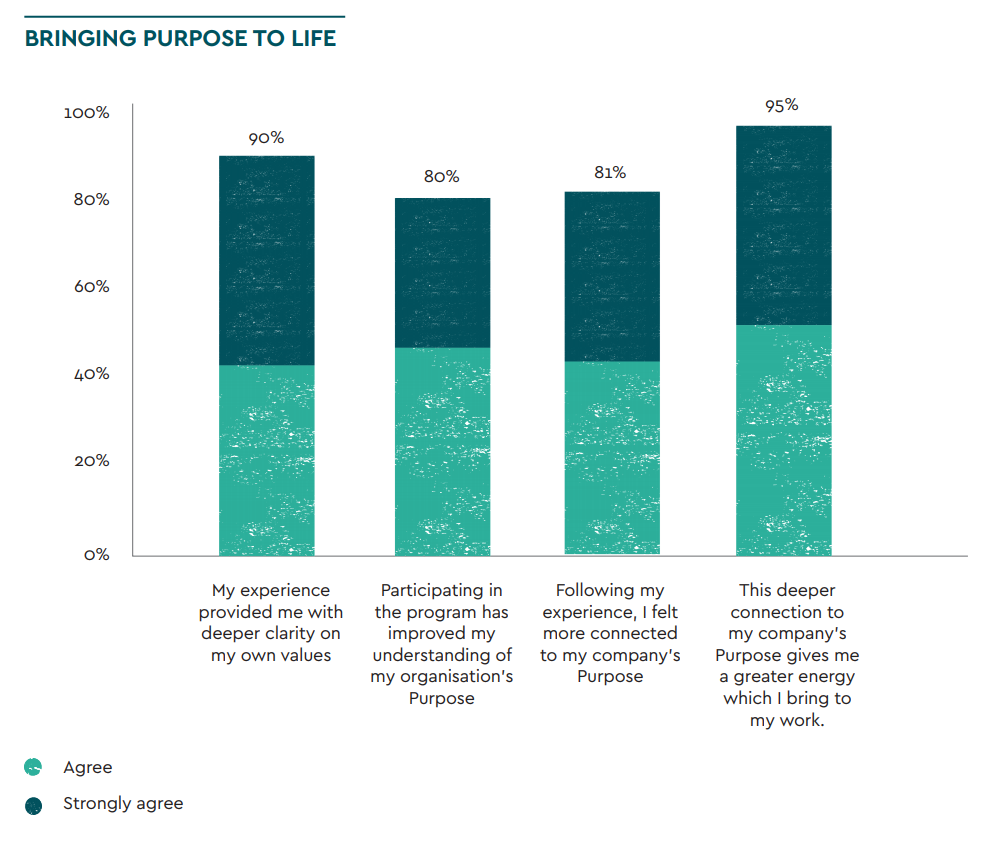## Mini basket to go here ##
Using CISL to Drive Employee Connection with Corporate Purpose
Purpose is becoming more embedded in business. It is a major driving force that is seen as vital for the incoming generations of employees who demand that their place of work has a positive effect on the world. Only recently, the ‘Business Roundtable’, a group of 200 CEOs in the US announced a new purpose for the corporation. This included phrases like, ‘dealing fairly and ethically with suppliers’, ‘supporting the communities in which we work’ and ‘protecting the environment’. Shareholders weren’t mentioned until word 250 out of 300. Things are definitely shifting.
Purpose is a challenging concept as it is stretched wide in terms of interpretation. For Emerging World, Purpose starts with a defining strategy that clearly states how a company intends to make a positive impact beyond profit. This strategy is linked to a set of values that help to drive delivery. Successful Purpose-driven companies unite values and strategy into behaviours, approach and measurable impact.
In our mission to learn more about how immersive learning programmes impact an employee’s connection to corporate Purpose, we introduced a ‘Connection to Purpose’ element in the 2019 Corporate International Service Learning (CISL) Impact Benchmark Study.
Intuitively, we know that Immersive Learning experiences contribute towards developing a connection to purpose and now we have the data to support this:

How CISL programme participants responded to the Purpose questions asked in the 2019 CISL Impact Benchmark Study.
Download the 2019 CISL Impact Benchmark Study
As well as helping us to understand how CISL Programmes help employees connect with corporate Purpose, we are also able to identify factors of programme design that help strengthen that impact. We have identified the top 3 impact levers for developing Connection to Purpose as:
• Partner need for skills
• Appropriate match
• Setting learning objectives
When a Partner organisation has a need for the participants skills and experience programme participants are more likely to develop Connection to Purpose
When participants felt that a partner organisation had a need for their skills and experience, we see a higher impact across the Connection to Purpose measures. The chart below shows how matching participants skills with partner’s needs makes a difference in developing a connection to corporate Purpose:

The data shows participants that either agreed and strongly agreed versus disagreed and strongly disagreed that partner had a need for their skills and expertise. The two sets of data were assessed against the Purpose measures.
When a participant feels that an assignment was an appropriate match for their skills and expertise they are more likely to connect with corporate Purpose
When there is a desire for a CISL programme to connect an employee with a company’s Purpose, ensuring that assignments match the skills and expertise of a participant is important. The chart below illustrates just how much difference appropriately matching participants skills and expertise can make to developing connection to Purpose:

The data looks at participants that either agreed and strongly agreed versus disagreed and strongly disagreed that their assignment was an appropriate match. These two sets of data were then evaluated against the Purpose measures.
Setting learning objectives impacts a participants connection to Purpose
When learning objectives are set prior to an immersive experience, we see greater impact across all Purpose measures. The chart below shows this impacts connection to Purpose outcomes:

The data looks at participants that either agreed and strongly agreed versus disagreed and strongly disagreed that they set learning objectives prior to their assignment. Once again, these two sets of data were assessed against the Purpose measures.
All of this data from the 2019 CISL Impact Benchmark Study is enabling programme managers to be more deliberate about how their programmes are designed to support good quality learning outcomes aligned to organisational strategies.
We have already shared similar insights for developing Responsible Leadership behaviours with CISL (Click here to read the blog) and next week, we will look at how Immersive Learning Programmes Develop Leaders.






